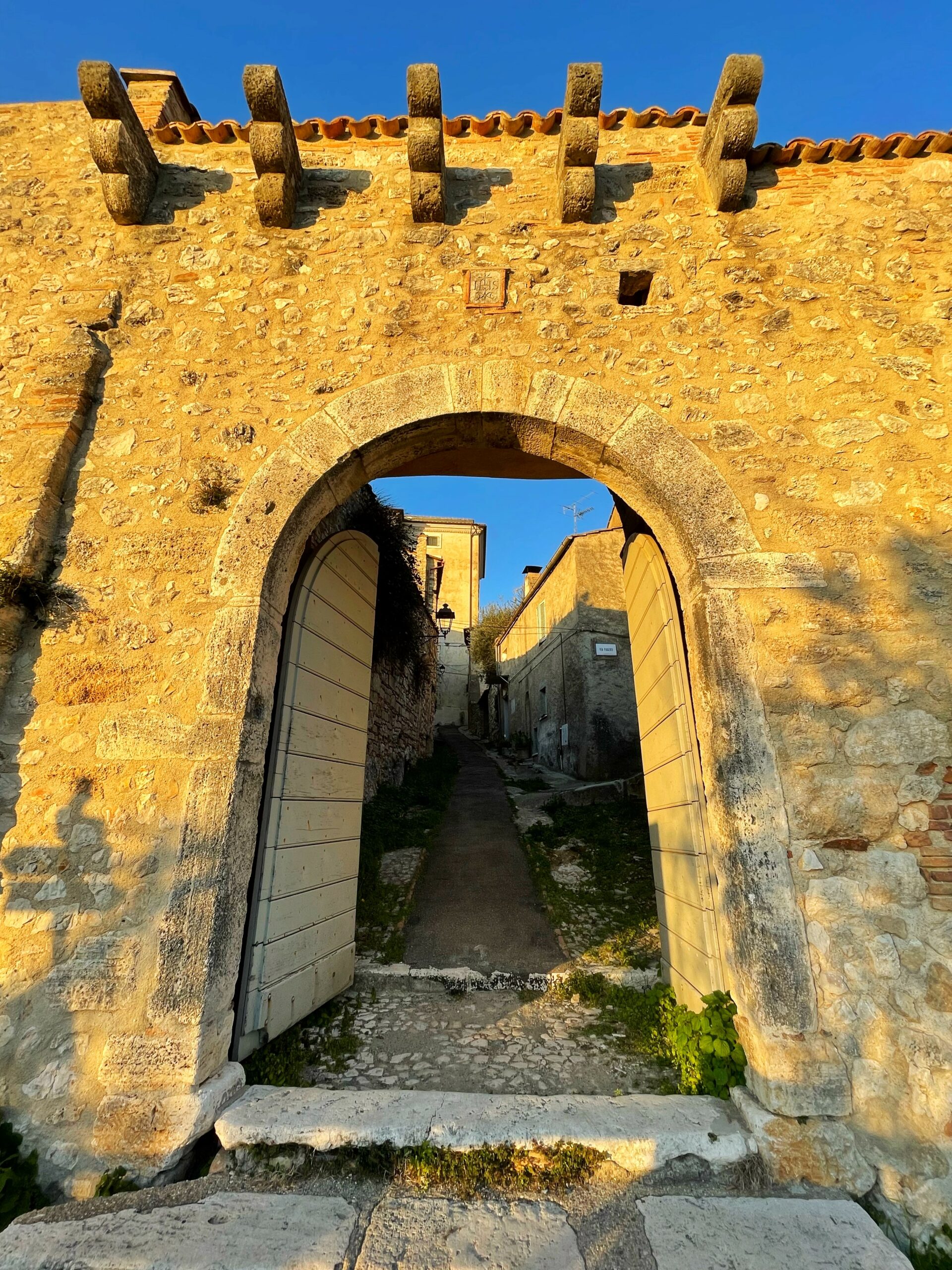
Porta Romana is the main and imposing of the four gates that allow access to the historic center of Amelia. It dates back to the 16th century, when it was modified and rebuilt in travertine. In the past it was called “Busolina”, but in 1703 the inhabitants of Amelia, after having survived a strong earthquake, consecrated the city to the Madonna Assunta and placed a plaque on the door with a dedication. Above the arch of the door there is a fresco with the city’s coat of arms.
Porta Leone was reinforced in the 9th century to defend the city from Saracen incursions. It takes its name from Pope Leo IV, who had the walls of Amelia restored. The gate has a rectangular turret that allowed the guards to defend it. Porta Leone overlooks the main street which hosted various artisan businesses.
Porta Posterola, dating back to the 13th century, is made up of two doors arranged perpendicularly. It was used as a secondary entrance and controlled the transit of people and carts. The gate was guarded by a guard housed in the nearby watchtower.
Porta della Valle is located high above the road below and is the only known access to the medieval walls in the northwestern section of Amelia. It offers a panoramic view of the Amerina Valley and the surrounding hills. The gate dates back to the 13th century and next to it is a circular tower which is part of the fortifications built in that period.
Porta di Pantanelli is a polygonal door with a limestone facing. It is approximately 6 meters high and has a round arch. It is the only gate left intact from the ancient walls of Ameria. It is believed to date back to the city’s Romanization period, and its restoration was recently completed.
These gates represent important historical and architectural elements of Amelia and are a testament to its rich history.